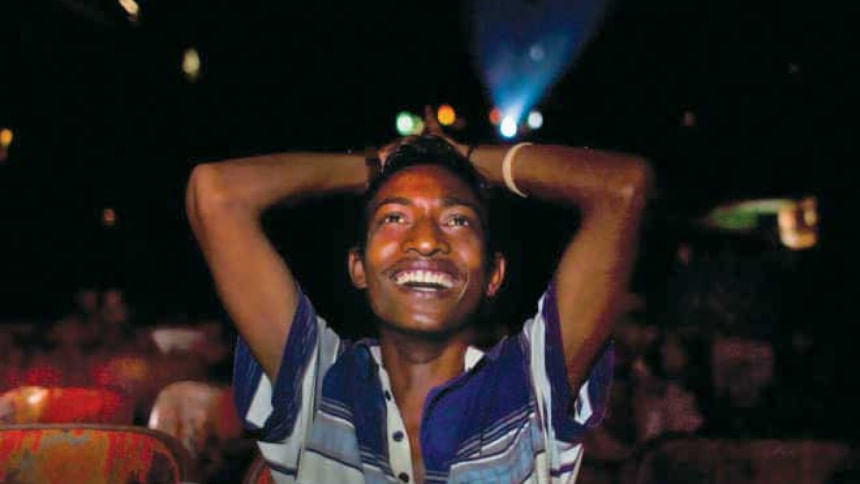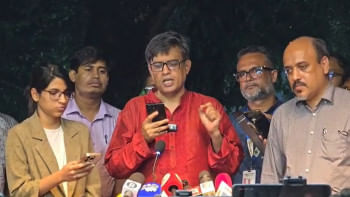Making movies work

One can't help but view the recent growth in cinema-goers with sepia-hued tones. The sudden rise in the numbers of people going to the movies is a look back to the glory days of the Bangladeshi movie industry. However, the trend begs the question as to why this has suddenly come about.
What changed in the years between the dwindling numbers of movie-goers and the spurt in their growth? What changed to bring about this remarkable turn of events? The reasons are in fact quite complicated and cannot be pointed down to one thing only. It has rather been a combination of factors that has brought this change about.
It also hasn't happened in a day but rather through a concentrated effort over a number of years.

"Previously, we did not have many movie theatres showing the latest Hollywood movies but now we get to see the movies almost as soon as they are released abroad," Naziba Basher, an actor said. "Since, these movies have an ongoing hype about them, they easily attract people to the theatres," she continued.
Minar Rahman, another soap actor, confirmed the line of thought.
"We watched Mockingjay with the rest of the world. The movie was built the world over and even Bangladesh could not escape the hype and the numbers show that," he added.

Indeed, the influx of Hollywood movies has been a key factor towards drawing people to the theatre. Ever since, Balaka and a few others decided to hold a showing for Godzilla back in the late 90s, movie-theatre owners realised that they were indeed sitting on a money pot. However, the cost of bringing these movies was a factor and one that stood as a stumbling block towards developing the market for foreign movies.
Even the latest Bangladeshi movie commanded ticket prices of not more than Tk100 but the reels of foreign movies were much more costly. Hence, it was mandatory to charge a much higher price for the tickets in order to break even.
A secondary option would have been to play DVDs of the movies on a projector screen but this meant that one would have to wait till the best print came put and when it did, the hype that goes with the movie would have long died for most people. Therefore, the idea could not be considered feasible.

"Back then, when we rented movie reels, it could cost around thousands of dollars. In India, each reel for the latest movie would cross 50,000 rupees. This was a considerable investment, with low rewards," Azmi Agaz, an industry insider explained.
"Now the costs have come down, due to digitalisation, with the same reels now costing around 10-12,000 rupees," she said.
This fall in costs has partly gone a long way towards bringing the latest flicks to movie theatres in Bangladesh and filling the long empty seats.

Although, Hollywood movies had a role to play, they were not the only reason for city-dwellers thronging to the cinemas again. The Bangladeshi movie industry saw itself coming out of the grips of the highly commercial movies full of Bollywood-y elements and poor quality cinematography. With movies such as Matir Moyna, Guerilla, Television and Mon Pura, more people became interested in Bangladeshi movies.
As some of these movies added another feather in their caps with international recognition, the publicity for these movies happened automatically. At the same time, Bangladesh began creating superstars once more, in the mould of Suborna Mustafa, far too often a lone star in the industry. As Joya Ahsan blossomed into the next big thing, she brought along with her a brand new breed of fans. Bangladesh had found its next big superstar who was on the brink of global stardom. The attention was not undeserving.

If there weren't enough reasons for movie-goers already, then another one was yet to come and this was perhaps to be one of the biggest. His name was Ananta Jalil and he was all talk and all delivery.
Ananta Jalil, without question, took the Bangladeshi movie industry to a whole new level. The undisputed superstar came, saw and conquered and he did all with style. He was Bangladesh's first answer to Chuck Norris and Rajnikanth and he was here to stay.
His movies screened to sold out theatres all across the country. Although some questioned his script and acting prowess, the fact that he had elevated the quality of Bangladeshi movies was undoubted. His rise coincided with the rise of Bangladeshi movies and it was of course no coincidence.
Indeed, the cinema-going culture, its birth, demise and revival all provide a fascinating insight on how the industry works. With so many factors coming into play, pinpointing one is next to impossible. But it is the concoction made of all these factors that make the story of movie theatres so much more interesting.

Photo: Kauser Haider

 For all latest news, follow The Daily Star's Google News channel.
For all latest news, follow The Daily Star's Google News channel. 



Comments